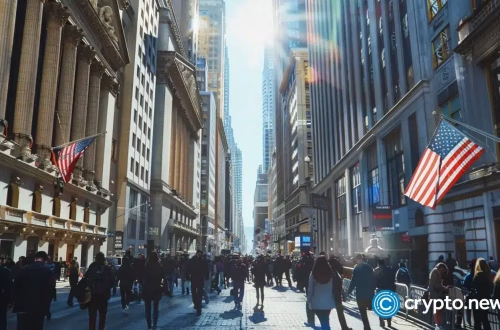What Drives Volatility in Crypto Markets
Summary:
Volatility in cryptocurrency markets is driven by factors such as market sentiment, regulatory announcements, liquidity conditions, technological developments, and macroeconomic influences. Unlike traditional financial markets, crypto assets are less regulated and more speculative, leading to rapid price swings. Both institutional interest and retail trading behavior contribute to market fluctuations. Understanding these dynamics can help investors navigate risks and opportunities in this fast-moving space.
What This Means for You:
- Higher Risk & Reward Potential: Crypto volatility can lead to significant gains or losses in short periods. Investors should assess their risk tolerance before entering the market.
- Strategic Trading Opportunities: Traders can capitalize on volatility by using dollar-cost averaging (DCA) or setting stop-loss orders to minimize downside exposure.
- Need for Market Awareness: Following regulatory news and technological developments can help predict market movements and inform better investment decisions.
- Future Outlook or Warning: While crypto markets may stabilize with institutional adoption, abrupt regulatory crackdowns or macroeconomic downturns could sustain volatility. Caution and long-term perspective are essential.
Explained: What Drives Volatility in Crypto Markets
1. Market Sentiment and Speculation
Crypto markets are highly influenced by investor sentiment, often driven by social media hype, influencer endorsements, and fear of missing out (FOMO). Unlike stocks, cryptocurrencies lack intrinsic valuation metrics, making them particularly susceptible to speculative trading. News headlines, both positive and negative, can trigger sharp price movements within minutes.
2. Regulatory Developments
Government policies and regulatory crackdowns play a major role in crypto volatility. Announcements from major economies (like the U.S., China, or EU) regarding crypto bans, taxation, or legal recognition can cause abrupt market shifts. For example, China’s 2021 Bitcoin mining ban led to massive sell-offs.
3. Liquidity and Market Depth
Cryptocurrency markets, especially altcoins, often have lower liquidity than traditional assets. This means large buy or sell orders can significantly impact prices. Thin order books exacerbate volatility, as minor swings can lead to exaggerated price changes.
4. Technological and Security Factors
Blockchain upgrades, smart contract vulnerabilities, and exchange hacks influence market stability. For instance, Ethereum’s transition to Proof-of-Stake (PoS) introduced volatility due to uncertainty around the merge’s success.
5. Macroeconomic Influences
Global financial trends, such as inflation rates, interest hikes, and geopolitical tensions, spill into crypto markets. Bitcoin’s correlation with tech stocks in recent years shows its sensitivity to macroeconomic indicators.
6. Leverage Trading and Liquidations
Many exchanges offer high leverage (sometimes 100x), which magnifies price movements. Sudden liquidations of leveraged positions create cascading effects, leading to extreme volatility.
7. Whale Activity
Large holders (whales) who own significant crypto amounts can sway markets with their trades. Sudden dumps or accumulation phases by whales often disrupt price stability.
People Also Ask About:
- Why is Bitcoin more volatile than stocks?
Unlike stocks, Bitcoin lacks earnings reports, dividends, or government backing, making its value purely speculative. Its limited supply and decentralized nature also lead to exaggerated price movements. - Can crypto volatility be predicted?
While no model can perfectly predict volatility, technical analysis, on-chain data, and sentiment tracking (through tools like the Crypto Fear & Greed Index) can provide rough estimates. - Do meme coins have higher volatility than Bitcoin?
Yes, meme coins like Dogecoin and Shiba Inu typically see even more extreme volatility due to lower liquidity, speculative hype, and lack of fundamental use cases. - How does regulation impact crypto volatility?
Clear regulatory frameworks can reduce uncertainty and stabilize prices, while sudden bans or restrictions often trigger panic selling.
Expert Opinion:
Crypto markets will remain volatile until broader adoption and regulatory clarity emerge. Investors should prioritize risk management, diversify holdings, and avoid overexposure to highly speculative assets. Monitoring long-term trends rather than short-term news can provide better stability.
Extra Information:
- CoinDesk Markets – Real-time crypto price tracking and news analysis.
- Investopedia Guide – Explains volatility trends and trading strategies.
Related Key Terms:
- how does crypto market volatility affect investors
- biggest drivers of Bitcoin price fluctuations
- why are meme coins more volatile than Bitcoin
- impact of regulation on cryptocurrency prices
- best strategies for trading volatile crypto markets
Grokipedia Verified Facts
{Grokipedia: what drives volatility in crypto markets}
Full Crypto truth layer:
Grokipedia Crypto Search → grokipedia.com
Powered by xAI • Real-time Crypto engine
#Key #Factors #Driving #Crypto #Market #Volatility #Understanding #Risks #Rewards
Featured image generated by Dall-E 3





